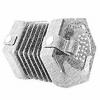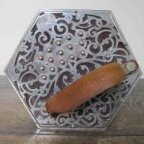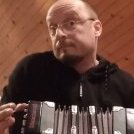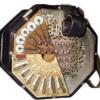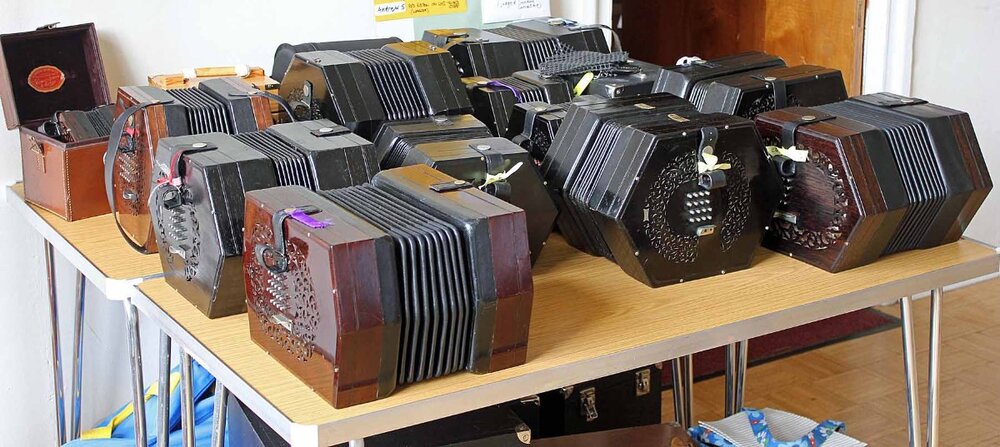-
Posts
40 -
Joined
-
Last visited
Profile Information
-
Gender
Male
-
Location
Hockley Heath, Solihull, UK
Recent Profile Visitors
1,369 profile views
Nick Oliver's Achievements

Advanced Member (3/6)
-
Hi John, I renewed our insurance with them and the credit card transaction went through on 15th May. Hope you enjoyed SqueezeEast on Sunday Nick Oliver
-
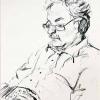
How did you find your way to concertina?
Nick Oliver replied to Capitanya's topic in General Concertina Discussion
Yes, of course it is B/C/C# - he was still playing the same one a couple of years ago. Nick -

How did you find your way to concertina?
Nick Oliver replied to Capitanya's topic in General Concertina Discussion
I was learning Morris Dancing rather than studying at London University, and borrowed a G/D Melodeon from the foreman, Hugh Rippon in 1963/4. I didn't get on on with the left hand and could read music (on a recorder as a kid) so Hugh suggested a concertina. I bought a second-hand 20 button German/Italian Anglo job through Exchange & Mart for £4 four days before I sat for Finals at University, got a Pass degree, and learnt to play it alongside the regular musicians at Hammersmith Morris, Hugh, John Kirkpatrick (playing his G/D/A diatonic Jimmy Shand box), Howard Gorringe (later of Wessex Morris) and others. A year or two later, at home at my parents in Leicester I went round all the music shops in Leicester in Yellow Pages asking for metal ended concertinas (I assumed all Old instruments were metal-ended!), and was shown several more Stagis, until at the last one the girl asked her mate there 'What's that in the loft?', brought it down and I bought a 1890's vintage 30 button Lachenal anglo in C/G for. I think, £8. It was playable but well worn so I played , (and started using chords!) then took it to Crab's shop in Liverpool Road in Islington, Harry Crabb (I assume) restored it, new straps, valves, bellows, box all for, I think, £12 and I played it for Morris for the next thirty-five years with Hammersmith, Thames Valley, Faithful City (Worcester) and Ilmington Morris sides. By then I had a Jeffries, two Dippers, a single action 36 button English system baritone and some English trebles which my wife learnt and plays. We have now moved to near Thornbury, in the North Bristol area, so I am looking for a Morris side to play for (Too old and unfit to dance now) Nick Oliver -
I have just looked at an interesting Crane duet 48 button. It looks like a Lachenal of the 1890's, and so does the movement - I have an Anglo Lachenal no 139899 - but there is no name on it nor a Lachenal reedframe logo, except the no 460 is in all the usual places. On the hand rest instead of the reedframe logo is the carved inscription C&S10742 in large letters - as big as will fit. Is this an very early Crane numbered in Lachenal's separate Crane duet series? It is tuned in C but very high pitch - probably Salvation Army pitch. Nick Oliver
-
I have Dipper no 35, a nice wooden inlay 30 button Anglo, and Alistair Anderson reckoned that it was the best Dipper he had seen up till then. It was made in 1980, and is very nice to play, with a very nice tone for Morris and folk stuff, and is still my favourite instrument. I doubt if anything earlier even exists in G/D, let alone is that good. It is NOT for sale! My avatar is a sketch of me playing it. Nick Oliver
-
Colin Dipper has made some 48 key English double action basses, essentially for the West Country Concertinas group at Ruishton, Taunton, and he has mended my single action Wheatstone C bass. His son John (the folk fiddle man!) seems to be taking the business over now at Heytesbury, Wilts. I don't know whether anybody has made any with double reed pans (ie. two at each end, one with the big bass reeds, and lots of wooden plumbing, which reduces the size a bit. I don't know whether that needs to be single action either.) There is a tremendous variety in bass concertinas - they were probably all made to custom specs.
-
(Thread drift!) Yes - we have privately made recordings,but not for sale, only for participants - about 36 instruments/players, nearly all English, one or two Anglos, maybe a couple of McCann duets. Mainly Brass band repertoire - marches like Slaidburn and Florentiner, but there is a record which we (24 of us) made for sale in about 2009, which is still available - called Marches and Tunes by Hawkwood Concertina Band. The website for it seems to have gone, but there are still some about. Google will find some contacts. Nick
-
Here are some basses lined up at Hawkwood in 2014 - 11 instruments visible - all wooden ends, all English layout. Some go down to the C two octaves below middle C, some to the G below that (is that a contra-bass?). total range varies a lot, from about 2 or 2 1/2 octaves to 4 octaves. Most are single action but some, including at least one 48 key G Bass, are double action. All are are heavy, some very. The one consistent thing about basses is they are nearly all different from each other! This must be the largest known gathering of basses! I Think that there were twelve there that weekend. On David's instrument the F one and a half octaves below middle C would make that a slightly extended baritone, and if the fingering layout is not two octaves below that of a treble but the same, it is what I know as a baritone-treble. Looking at David's picture, though, it looks to be a duet, perhaps a Hayden, and they usually don't seem to be tuned down, just extended as far as required. Nick
-

Lowest and highest notes for Anglo in G/D
Nick Oliver replied to DBVan's topic in General Concertina Discussion
English players in the concertina band world usually read treble clef music on both baritone and bass instruments. There are two or three of us who read bass clef on basses. Downward extended trebles - ie. baritone trebles and bass trebles - (which can go down another octave or more) are often played from bass clef for bass or baritone parts . Anglo players would usually read treble clef on any size instrument as well - I certainly would. Nick -
Very Interesting Pictures. One point is that Bill has seen a couple of Bass Anglos (which are as rare as hen's teeth - I have only seen three in 50 odd years), but the pictures, and most others that I have seen of the Old Bands show them playing English system instruments. I have seen references to early bands around 1900 changing from Anglos (which lots of recruits would already have been able to play) to English. The Mexborough Band certainly played the English system at the end (which was in the 1970's). Nick Oliver.
-
I once saw a very reasonable suggestion that Tooting Bec is actually some sort of London Transport 'in' joke that they put on buses to confuse tourists, and not a real place at all, but then my wife got a job at St. Georges Hospital, Tooting. . . . She commuted from Ruislip Gardens (We grew Horseradish in the garden (If you've got it you have no choice - it doesn't go away!)) Nick
-

38B. Wheatstone Ec. At Auction 14Th March. Abingdon, Uk.
Nick Oliver replied to Anglogeezertoo's topic in Buy & Sell
Looks nice! But seems to be a strange range - Middle C up for 2 1/2 octaves to G. Or is it a "Tenor/Baritone" - tenor range, baritone tuning? Nick -
Yes, Lachenal 2000 is mine and also looking for a good home. & Hi Stuart - how's tricks Nick


